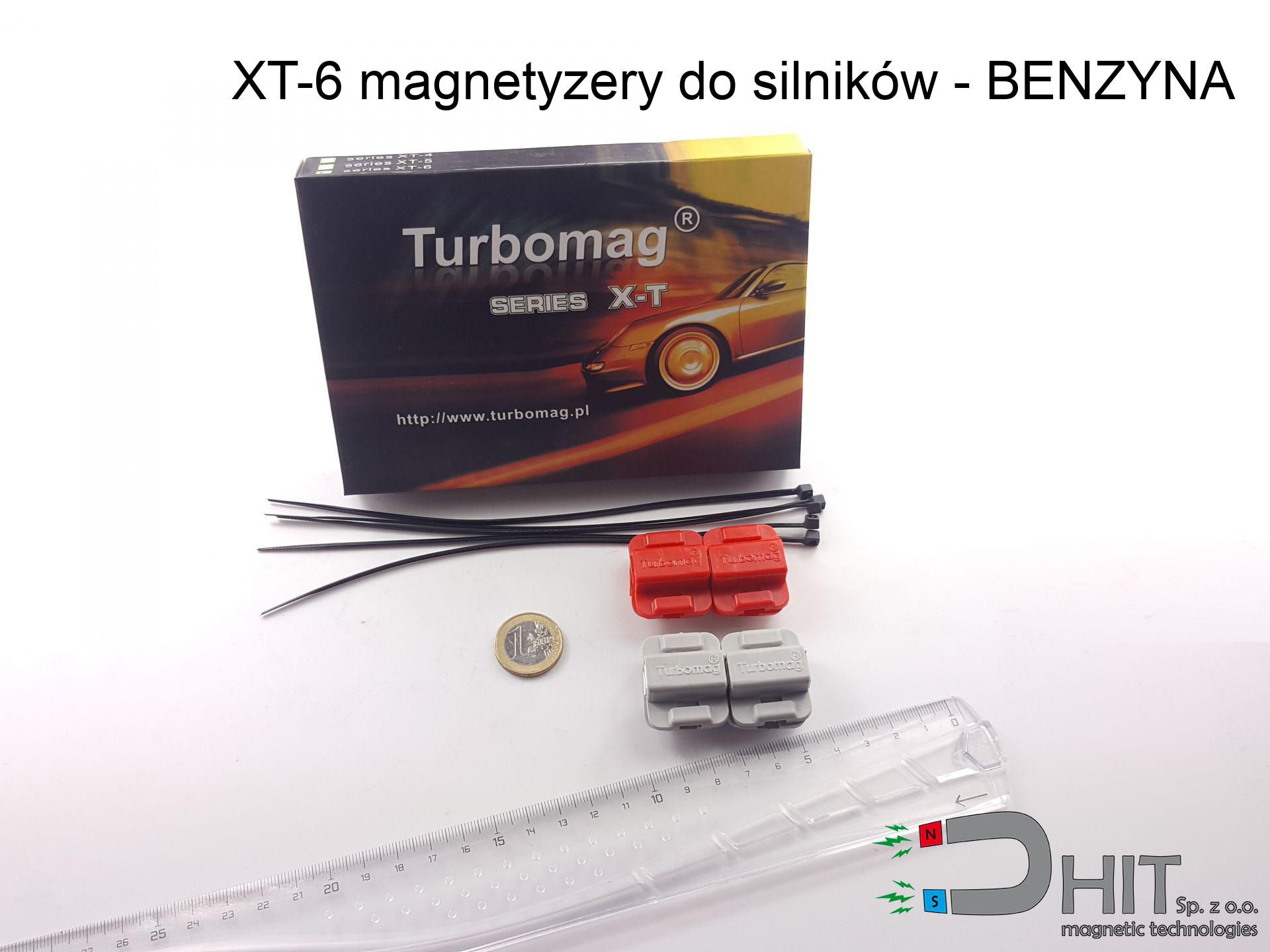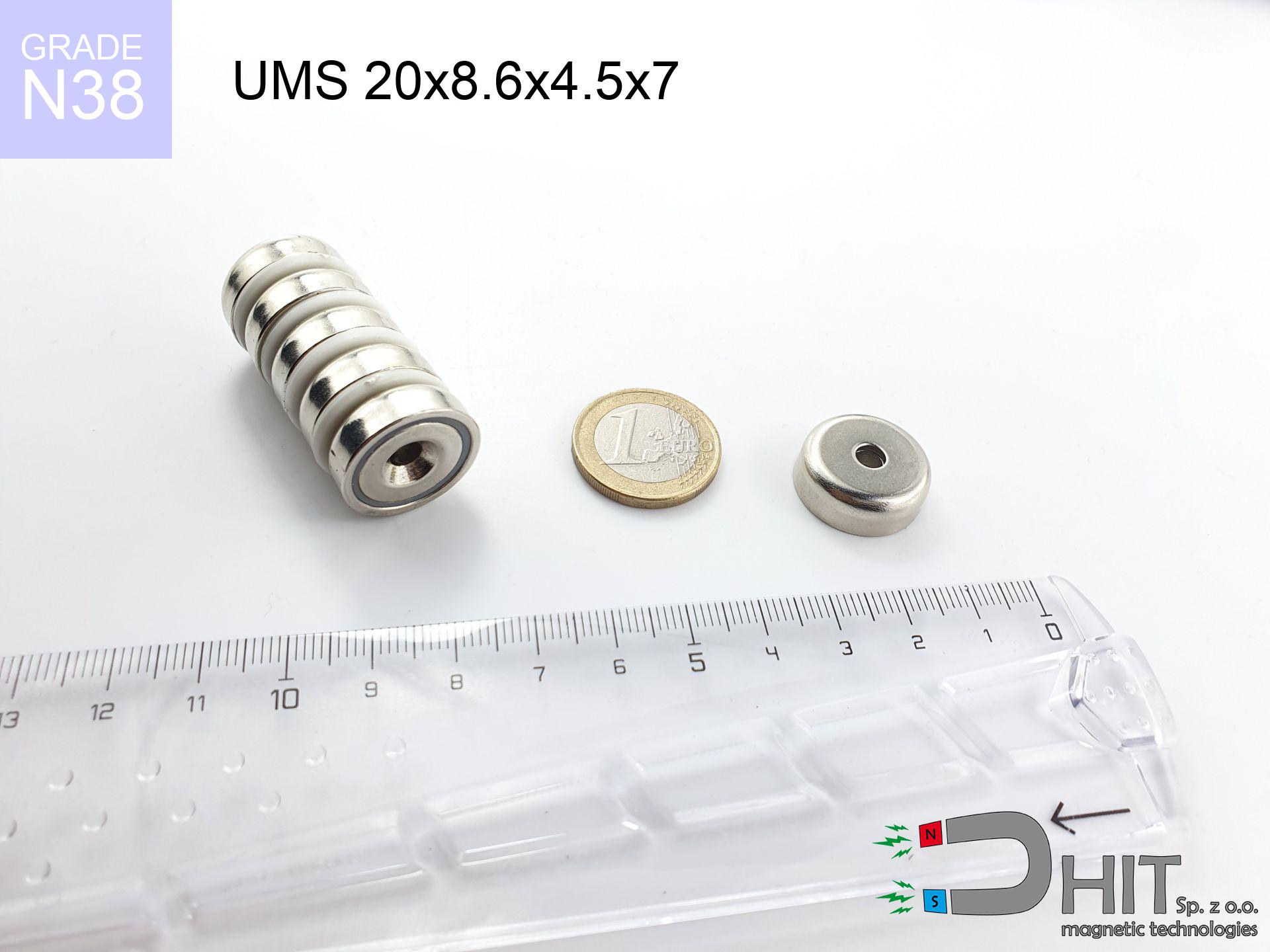UMGGZ 22x6 [M4] GZ / N38 - rubber magnetic holder external thread
rubber magnetic holder external thread
Catalog no 340310
GTIN/EAN: 5906301814726
Diameter Ø
22 mm [±1 mm]
Height
6 mm [±1 mm]
Weight
15 g
Load capacity
5.10 kg / 50.01 N
7.38 ZŁ with VAT / pcs + price for transport
6.00 ZŁ net + 23% VAT / pcs
bulk discounts:
Need more?
Call us now
+48 888 99 98 98
alternatively get in touch via
request form
our website.
Lifting power and form of a magnet can be tested on our
force calculator.
Order by 14:00 and we’ll ship today!
Technical of the product - UMGGZ 22x6 [M4] GZ / N38 - rubber magnetic holder external thread
Specification / characteristics - UMGGZ 22x6 [M4] GZ / N38 - rubber magnetic holder external thread
| properties | values |
|---|---|
| Cat. no. | 340310 |
| GTIN/EAN | 5906301814726 |
| Production/Distribution | Dhit sp. z o.o. |
| Country of origin | Poland / China / Germany |
| Customs code | 85059029 |
| Diameter Ø | 22 mm [±1 mm] |
| Height | 6 mm [±1 mm] |
| Weight | 15 g |
| Load capacity ~ ? | 5.10 kg / 50.01 N |
| Manufacturing Tolerance | ±1 mm |
Magnetic properties of material N38
| properties | values | units |
|---|---|---|
| remenance Br [min. - max.] ? | 12.2-12.6 | kGs |
| remenance Br [min. - max.] ? | 1220-1260 | mT |
| coercivity bHc ? | 10.8-11.5 | kOe |
| coercivity bHc ? | 860-915 | kA/m |
| actual internal force iHc | ≥ 12 | kOe |
| actual internal force iHc | ≥ 955 | kA/m |
| energy density [min. - max.] ? | 36-38 | BH max MGOe |
| energy density [min. - max.] ? | 287-303 | BH max KJ/m |
| max. temperature ? | ≤ 80 | °C |
Physical properties of sintered neodymium magnets Nd2Fe14B at 20°C
| properties | values | units |
|---|---|---|
| Vickers hardness | ≥550 | Hv |
| Density | ≥7.4 | g/cm3 |
| Curie Temperature TC | 312 - 380 | °C |
| Curie Temperature TF | 593 - 716 | °F |
| Specific resistance | 150 | μΩ⋅cm |
| Bending strength | 250 | MPa |
| Compressive strength | 1000~1100 | MPa |
| Thermal expansion parallel (∥) to orientation (M) | (3-4) x 10-6 | °C-1 |
| Thermal expansion perpendicular (⊥) to orientation (M) | -(1-3) x 10-6 | °C-1 |
| Young's modulus | 1.7 x 104 | kg/mm² |
Elemental analysis
| iron (Fe) | 64% – 68% |
| neodymium (Nd) | 29% – 32% |
| boron (B) | 1.1% – 1.2% |
| dysprosium (Dy) | 0.5% – 2.0% |
| coating (Ni-Cu-Ni) | < 0.05% |
Ecology and recycling (GPSR)
| recyclability (EoL) | 100% |
| recycled raw materials | ~10% (pre-cons) |
| carbon footprint | low / zredukowany |
| waste code (EWC) | 16 02 16 |
Other deals
Advantages and disadvantages of rare earth magnets.
Strengths
- Their magnetic field is maintained, and after approximately ten years it drops only by ~1% (theoretically),
- They maintain their magnetic properties even under external field action,
- In other words, due to the aesthetic surface of silver, the element is aesthetically pleasing,
- Magnetic induction on the surface of the magnet is impressive,
- Thanks to resistance to high temperature, they can operate (depending on the form) even at temperatures up to 230°C and higher...
- Due to the potential of flexible forming and customization to unique requirements, neodymium magnets can be produced in a broad palette of forms and dimensions, which amplifies use scope,
- Fundamental importance in electronics industry – they serve a role in data components, electric drive systems, medical equipment, as well as modern systems.
- Compactness – despite small sizes they provide effective action, making them ideal for precision applications
Limitations
- To avoid cracks upon strong impacts, we suggest using special steel holders. Such a solution secures the magnet and simultaneously improves its durability.
- NdFeB magnets lose power when exposed to high temperatures. After reaching 80°C, many of them experience permanent weakening of strength (a factor is the shape and dimensions of the magnet). We offer magnets specially adapted to work at temperatures up to 230°C marked [AH], which are very resistant to heat
- They oxidize in a humid environment. For use outdoors we suggest using waterproof magnets e.g. in rubber, plastic
- Due to limitations in creating threads and complicated shapes in magnets, we propose using casing - magnetic holder.
- Possible danger resulting from small fragments of magnets are risky, when accidentally swallowed, which becomes key in the aspect of protecting the youngest. Additionally, small elements of these products can complicate diagnosis medical in case of swallowing.
- Due to neodymium price, their price is relatively high,
Lifting parameters
Maximum lifting capacity of the magnet – what affects it?
- on a block made of structural steel, perfectly concentrating the magnetic field
- whose thickness equals approx. 10 mm
- with an ground touching surface
- under conditions of gap-free contact (metal-to-metal)
- during detachment in a direction perpendicular to the plane
- at temperature approx. 20 degrees Celsius
Determinants of lifting force in real conditions
- Distance (between the magnet and the metal), as even a very small clearance (e.g. 0.5 mm) leads to a reduction in force by up to 50% (this also applies to varnish, corrosion or dirt).
- Force direction – remember that the magnet has greatest strength perpendicularly. Under shear forces, the holding force drops drastically, often to levels of 20-30% of the nominal value.
- Plate thickness – too thin sheet does not accept the full field, causing part of the flux to be wasted into the air.
- Plate material – mild steel attracts best. Alloy admixtures lower magnetic properties and lifting capacity.
- Base smoothness – the more even the surface, the better the adhesion and higher the lifting capacity. Roughness creates an air distance.
- Thermal factor – high temperature reduces pulling force. Too high temperature can permanently demagnetize the magnet.
Lifting capacity testing was carried out on a smooth plate of suitable thickness, under a perpendicular pulling force, in contrast under parallel forces the load capacity is reduced by as much as 5 times. Additionally, even a slight gap between the magnet and the plate reduces the holding force.
H&S for magnets
Keep away from children
Adult use only. Small elements pose a choking risk, leading to severe trauma. Store away from children and animals.
Magnetic media
Powerful magnetic fields can destroy records on payment cards, hard drives, and storage devices. Maintain a gap of min. 10 cm.
Physical harm
Danger of trauma: The pulling power is so great that it can cause hematomas, crushing, and even bone fractures. Protective gloves are recommended.
Precision electronics
Navigation devices and smartphones are highly susceptible to magnetic fields. Direct contact with a strong magnet can ruin the sensors in your phone.
Combustion hazard
Combustion risk: Rare earth powder is highly flammable. Do not process magnets without safety gear as this risks ignition.
Power loss in heat
Regular neodymium magnets (N-type) lose magnetization when the temperature exceeds 80°C. Damage is permanent.
Nickel allergy
It is widely known that nickel (standard magnet coating) is a potent allergen. If your skin reacts to metals, prevent direct skin contact and select versions in plastic housing.
Do not underestimate power
Handle with care. Rare earth magnets act from a distance and connect with huge force, often quicker than you can react.
ICD Warning
Medical warning: Neodymium magnets can turn off pacemakers and defibrillators. Do not approach if you have medical devices.
Beware of splinters
Protect your eyes. Magnets can explode upon violent connection, launching sharp fragments into the air. Eye protection is mandatory.

![Rubberized magnet UMGGZ 22x6 [M4] GZ / N38 Rubberized magnet UMGGZ 22x6 [M4] GZ / N38](https://cdn3.dhit.pl/graphics/banners/magnet.webp)
![UMGGZ 22x6 [M4] GZ / N38 - rubber magnetic holder external thread](https://cdn3.dhit.pl/graphics/products/umg-22x6-m4-gz-hiw.jpg)
![HH 42x8.8 [M6] / N38 - through hole magnetic holder HH 42x8.8 [M6] / N38 - through hole magnetic holder](https://cdn3.dhit.pl/graphics/products/hh-42x8.8-m6-hin.jpg)




